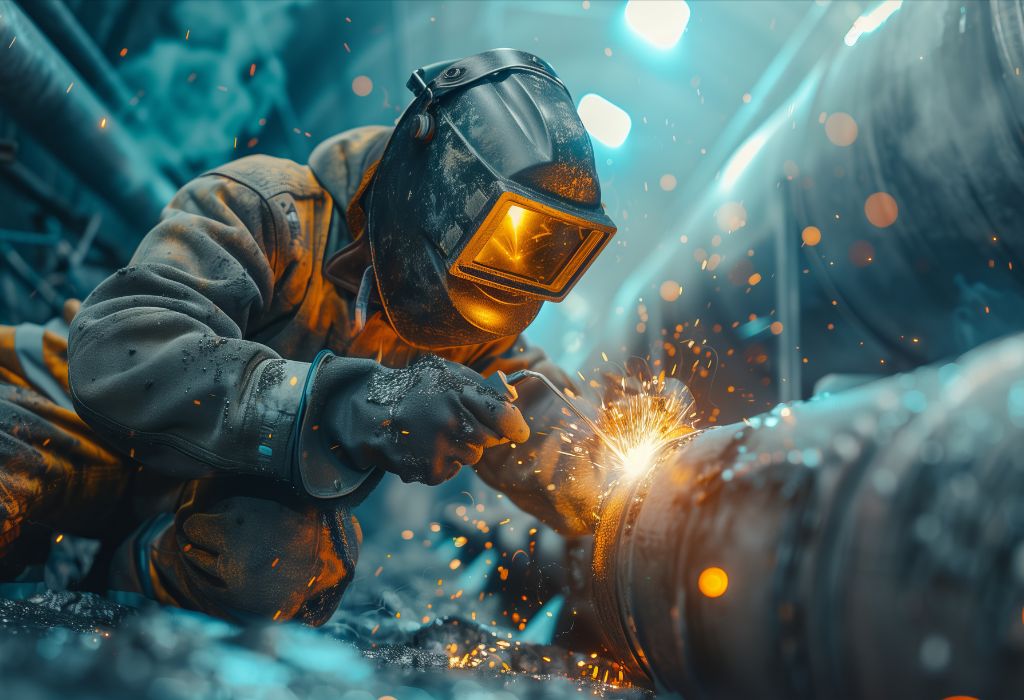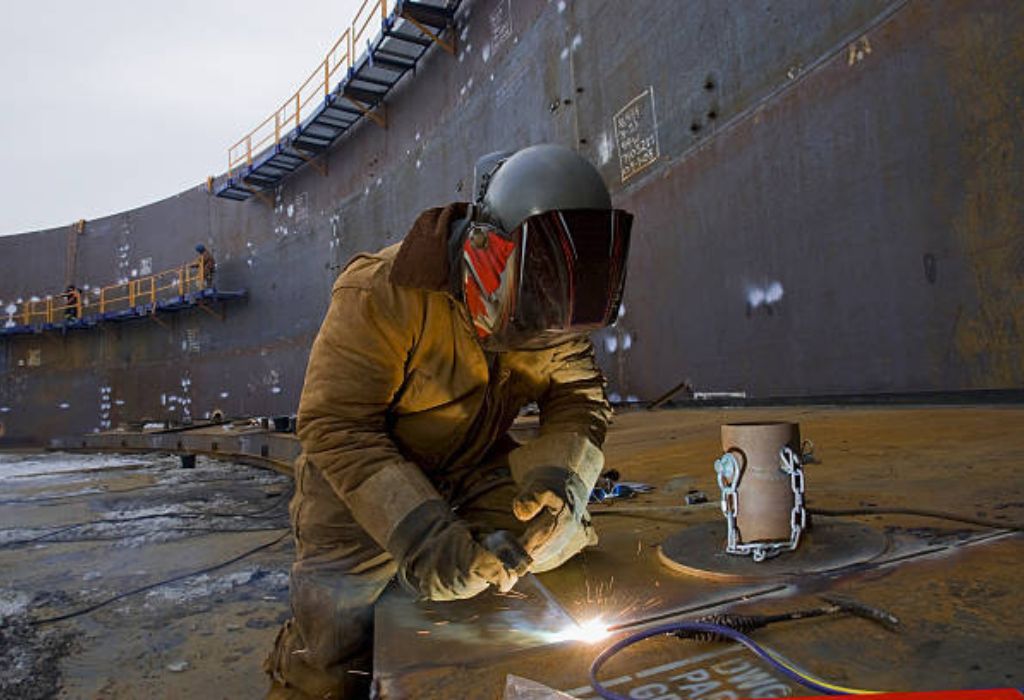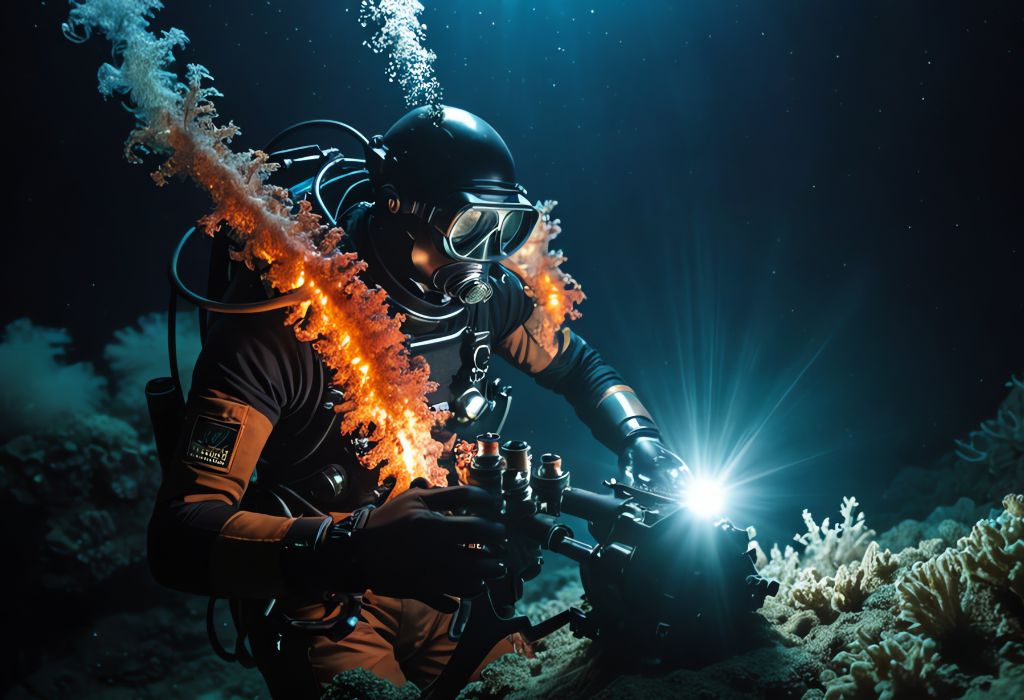Picture standing on the edge of a shipyard, staring at the ocean where massive oil rigs rise from the waves.
Hidden beneath the surface are welders who keep these structures alive by repairing pipelines and ship hulls.
The path to becoming one of these underwater welders is a journey that blends time, training, and resilience.
The demand is clear. According to the U.S. Bureau of Labor Statistics, commercial diving, including underwater welding, is projected to grow by 9% from 2022 to 2032, faster than most trades .
This growth is fueled by aging infrastructure, offshore energy, and global shipping needs.
But the real question many ask is: how long does it take to step into this career? The answer depends on education, diving certification, welding skills, and on-the-job training.
Some can qualify in under two years, while others may take longer based on specialization.
This article breaks down every step, helping future welders understand the training timeline, skills required, risks, and career opportunities.
Let’s dive into what it really takes to become an underwater welder.
What Is an Underwater Welder?

Underwater welding is the fusion of two demanding skills—commercial diving and welding—performed in high-pressure environments like oceans and reservoirs. These welders repair, cut, and maintain steel structures submerged in water.
Two main types define the trade: wet welding and dry (hyperbaric) welding. Wet welding uses special electrodes directly underwater, while dry welding takes place inside sealed chambers where divers breathe air instead of compressed water.
The role is high-risk. Dangers include decompression sickness, electrical hazards, and underwater currents. Because of this, underwater welders undergo rigorous training before taking on jobs.
Despite the risks, the job is vital. Industries like offshore oil, marine construction, and shipping rely on these welders to keep global operations running smoothly.
What does an underwater welder do?
They repair ships, pipelines, and offshore structures underwater.
Is underwater welding safe?
It carries risks, but proper training and safety procedures reduce hazards.
Do underwater welders only weld?
No, they also cut, inspect, and handle salvage or rigging work.
Which industries need underwater welders?
Shipping, oil and gas, infrastructure, and marine construction.
Is it just scuba diving with welding?
No, it requires commercial diving certification and advanced welding training.
How Long Does It Take to Be an Underwater Welder?
On average, it takes 2 to 3 years to become fully employable as an underwater welder. The timeline depends on individual progress and the type of training chosen.
The first step is learning welding on land, which can take 6 months to 2 years through vocational schools or apprenticeships. Next, divers must complete commercial diving school, usually lasting 7–12 months.
After both skills are acquired, candidates undergo specialized underwater welding courses, which last 6–12 weeks. Following this, additional time is spent on apprenticeships and on-the-job training.
While some people achieve certification in under 24 months, others take longer if they pursue advanced certifications or need more diving hours logged.
What is the fastest time to qualify?
Around 24 months with focused training.
Can it take longer than 3 years?
Yes, depending on career goals and required certifications.
Do you need experience before training?
Basic welding or diving experience speeds up progress.
Is schooling mandatory?
Yes, both welding and commercial diving schools are required.
How do employers judge readiness?
Through certifications, logged dive hours, and demonstrated skill.
Step 1: Learning Welding Skills
The journey starts with mastering welding on land. Training typically happens in trade schools, community colleges, or union apprenticeship programs.
Basic programs last 6 months to 1 year and cover welding techniques such as MIG, TIG, and Stick welding. These are essential because underwater welders often work with shielded metal arc welding.
Advanced training may extend to 2 years, especially if students pursue associate degrees in welding technology. This stage builds the foundation of metal joining, blueprint reading, and safety awareness.
Without strong welding skills on land, adapting to underwater conditions is nearly impossible. That’s why employers prefer welders with certifications from bodies like the American Welding Society (AWS).
Do you need to be a welder first?
Yes, strong welding skills are required before diving.
How long does welding school take?
Anywhere from 6 months to 2 years.
Which welding methods are taught?
MIG, TIG, and Stick welding are most common.
Is certification required?
Yes, AWS or equivalent certifications improve job chances.
Can welders skip land training?
No, it is mandatory to start with surface welding first.
Step 2: Commercial Diving Certification
After welding, the next step is becoming a certified commercial diver. Training programs range from 7 to 12 months, depending on intensity and specialization.
These schools teach diving physics, underwater safety, use of helmets, surface-supplied air systems, and decompression procedures. Students also practice working in pressurized chambers to simulate real job conditions.
Graduates earn a commercial diver certification, recognized by organizations such as the Association of Diving Contractors International (ADCI).
This stage not only builds diving ability but also trains candidates to handle emergencies like underwater equipment failures and decompression risks.
Do all underwater welders need diving certification?
Yes, it is mandatory.
How long is diving school?
Usually 7–12 months.
What skills are taught?
Diving physics, safety, chamber operations, and rescue techniques.
Which certification is required?
Commercial Diver Certification from recognized institutions.
Is scuba diving enough?
No, scuba diving alone does not qualify for underwater welding.
Step 3: Specialized Underwater Welding Training

Once welding and diving are mastered, candidates undergo specialized underwater welding courses. These are shorter but highly technical, lasting 6 to 12 weeks.
Instructors teach students to weld in murky waters, under pressure, and with restricted visibility. Practice includes both wet and dry hyperbaric welding.
Candidates also learn how to manage risks such as electric shock and marine hazards. These courses simulate real job conditions to prepare students for offshore environments.
At the end of training, welders must pass performance tests to prove their competence in underwater welding tasks.
How long is underwater welding school?
Between 6 and 12 weeks.
What skills are taught?
Wet and dry welding techniques, safety, and cutting methods.
Are tests required?
Yes, welders must pass performance exams.
Do you learn in real oceans?
Some training occurs in tanks, while advanced practice happens in open water.
Is this the final stage?
No, on-the-job training still follows.
Step 4: On-the-Job Experience
Even after training, new welders spend 6 months to 1 year gaining supervised field experience. During this time, they assist senior welders, perform basic underwater tasks, and build logged dive hours.
Experience is critical because no classroom can replicate real-world challenges like currents, poor visibility, and emergency situations.
Apprenticeships also help welders connect with employers in offshore oil, shipping, or marine construction industries.
This period determines whether a welder adapts well to the demanding lifestyle of working offshore for weeks at a time.
How long is the apprenticeship phase?
Usually 6 months to 1 year.
What tasks are performed?
Assisting with cutting, welding, and inspection jobs.
Do employers train further?
Yes, companies provide additional safety and technical training.
Why is logged dive time important?
It proves real underwater experience and improves employability.
Is fieldwork optional?
No, it is essential to secure long-term contracts.
Risks and Challenges in the Career
Underwater welding is one of the most hazardous trades. Electric shock, decompression sickness, and drowning are constant risks.
The U.S. Occupational Safety and Health Administration (OSHA) notes that diving-related injuries remain among the most dangerous occupations (OSHA). This is why extensive safety training is mandatory.
Beyond physical risks, welders face lifestyle challenges. Long offshore assignments mean weeks away from family, often in isolated or extreme environments.
Despite these obstacles, the career remains attractive due to high salaries, global travel, and opportunities in critical industries.
Is underwater welding dangerous?
Yes, but strict safety reduces risks.
What health risks exist?
Decompression sickness, hypothermia, and electric shock.
How do welders stay safe?
Through training, proper gear, and following dive protocols.
Is travel required?
Yes, most jobs involve offshore locations.
Why do people choose this job?
The pay is high, and the work is unique and rewarding.
Salary and Career Outlook

Underwater welders often earn salaries ranging from $50,000 to $120,000 per year, depending on experience and location.
Entry-level welders may start near $50,000, while specialized hyperbaric welders can make six-figure incomes with overtime and hazardous duty pay.
Career demand remains strong, as global infrastructure, shipping, and oil industries require constant maintenance.
Those with advanced certifications can also transition into supervisory or inspection roles, extending their careers beyond physically demanding dives.
How much do underwater welders earn?
Between $50,000 and $120,000 annually.
Do beginners earn less?
Yes, but pay increases with experience.
Are there high-paying niches?
Hyperbaric welding and offshore oil jobs pay the most.
Is overtime common?
Yes, many jobs offer significant overtime pay.
Is there career growth?
Yes, divers can move into inspection or supervisory roles.
Conclusion
Becoming an underwater welder is not an overnight journey. On average, it takes 2 to 3 years to progress from surface welding to commercial diving school, specialized training, and on-the-job experience.
The career is risky but rewarding, offering high pay, travel, and unique work environments. Success depends on dedication, skill, and commitment to safety.
For those willing to invest the time, underwater welding provides an adventurous and financially stable career path.

I’m Darrell Julian, the founder, lead writer, and hands-on welding enthusiast behind ArcWeldingPro.com. With more than 15 years of real-world welding experience, I created this platform to share what I’ve learned in the field, in the shop, and in the heat of the arc.


